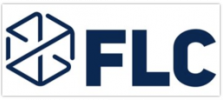A Low-Cost Tissue Microarrayer Instrument to Support Improved Cancer Diagnoses
A tissue microarray (TMA) is an important technique used by pathologists to accurately analyze tissue samples. It is a means of aggregating tissue samples in an organized grid fashion for high throughput analysis. Automated TMAs are commercially available, but they are expensive ($16,000-$230,000) and require specialized training and experience to apply the technology.

